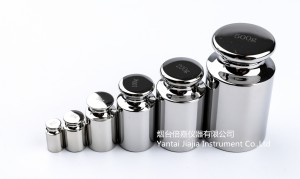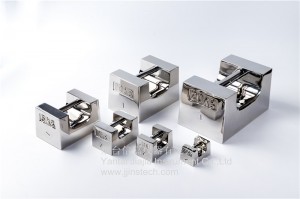(1) JJG99-90 and <Weights> have detailed regulations on the calibration methods of various classes of weights, which are the basis for the calibrating personnel.
(2) For first-class weights, the calibration certificate should indicate the corrected value of mass in vacuum, the actual mass in vacuum and the corrected value of converted mass.
(3) For the weights of the second and lower classes, the calibration certificate should indicate the mass correction value and the actual mass value of the converted mass.
(4) For grade weights, unless there are special requirements, only legal tolerances are indicated on the general calibration certificate, and no correction values are given.
(5) For the weights produced before the JJG99-90 regulations, the standard weights can be handled according to the following rules:
a. For solid first-class and second-class weights, they can still be used as first-class and second-class weights.
b. Due to the new regulations, the first-class, second-class, E1, etc., 1 (E1), E2, etc., 2 (E2), F1, etc., 3 (F1) class weights must be solid bodies of the whole material. Therefore, the original second- to fourth-class standard weights with speed control cavities should be classF1 and below the classF1.
c. The new regulations also stipulate that the mass correction value of the grade weight after the first calibration or repair shall not be greater than 1/ of the weight tolerance. According to this article, the original second to fifth grade weights with adjusting cavity can be Incorporated into the new class and grade weight series.
d. Example
1kg second-class weight with adjustment cavity, mass tolerance ±5mg, check F2 and other weight tolerance ±30mg; 4 (F2) class weight tolerance table is ±15mg. Therefore, the weight is used as a standard weight such as F2, and the calibration result will give a correction value; if the working weight is a 4 (F2) level weight, no correction value will be given.
For the 1kg third-class weight with adjustment cavity, it can be used as M1 and 5 (M1) class weights in the same way.
For 1kg fourth-class weight with adjustment cavity, it can be used as M2 and 6 (M2) class weights in the same way.
In conclusion, the above results also apply for weights of other masses. The original 2nd to 5th class weights (except solid 2nd class) are classified as F2, M1, M2 or class4 (F2), class5 (M1), class6 (M2) and class7 (0 ) class weights.
Post time: Jul-01-2022







